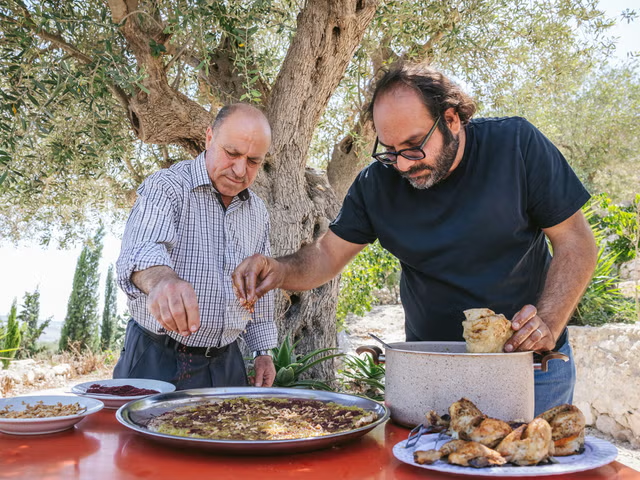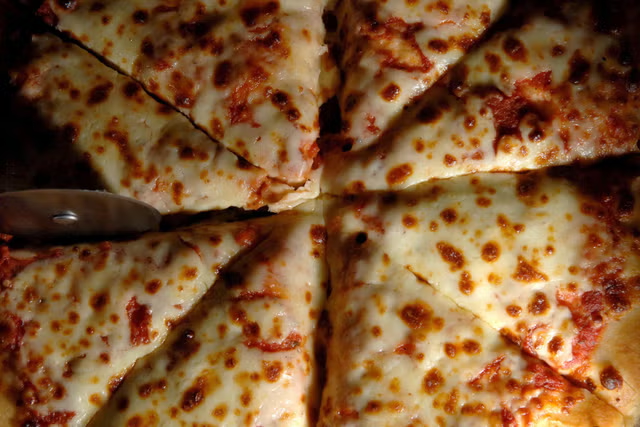Friday night is takeaway night and my wife and I are spoilt for choice. Two doors down in our Surrey village, we have the Navi Thai where the food is top notch. Then there’s the Ashtead Balti, so close the cat sometimes follows us and waits by the front door when we collect. Minutes away, there are kebabs, a Chinese takeaway and an Italian.
I should be as big as a house and am only saved from my gluttony by daily gym sessions and healthy eating during the week. Still, at 54, the struggle to avoid temptation and maintain an ideal weight gets harder.
According to a mass NHS study published earlier this week, my generation is now more likely than any other to suffer high cholesterol. The authors of the study firmly blame our reliance on convenience food, deliveries, and our predilection for takeaways.
Two thirds of people in their fifties who took part in the NHS Our Future Health programme – a collaboration between the public, charity and private sectors – were found to have high cholesterol, compared with 63 per cent of those in their sixties, 48 per cent of those in their seventies and 39 per cent of those in their eighties.
This slide to ill health is a consequence of “a generation which has grown reliant on highly processed foods and regular takeaways”, according to Tam Fry of the National Obesity Forum. Last year the World Health Organisation said that a “Deliveroo culture” fuelled by the pandemic could make Britain the fattest nation in Europe within a decade.
Jo Cunningham is a registered dietitian, nutritionist and founder of Green Light Nutrition. “Any foods which combine high levels of salt, sugar and fat (as takeaways do) can have an impact on health, particularly when eaten in excess,” she says.

“Salt for example, can increase blood pressure. A lot of takeaway food also contains high levels of refined carbohydrate, such as white rice or chips, which quickly raises blood sugar levels and is followed by a crash. High-fat diets are linked to obesity and inflammation. Over time obesity carries health risks including Type 2 diabetes, heart disease and it is linked to certain cancers.
“Many takeaways offer little in the way of fibre either, so they are not beneficial for gut health. Processed meat, such as ham or salami, is carcinogenic, and the World Cancer Research Fund recommends avoiding it.”
Chinese takeaways, says Cunningham, are the worst culprits. “There is a lot of sugar and salt in many of the sauces. Even something like egg fried rice is fried in oil, not steamed.”
So is this the end of the takeaway?
Takeaway the pain: healthy swaps for your favourite fast food
Finding out the nutritional values of takeaway food from independent restaurants (as opposed to chains) is notoriously tricky as menus and ingredients vary considerably.
All servings are estimated from a standard takeaway tray for either a main or a side, unless where stated.
Jo Cunningham says: “Choosing rice OR bread is an easy way to help reduce that blood sugar spike that occurs after a carbohydrate rich meal. A plain naan will have less sugar and you’ll be getting some gut-loving fibre and plant-based protein from the dhal.”
Cunningham says: “I often ask for the chicken without batter in a sweet and sour dish to still get the flavour you’re craving but with reduced fat content. A vegetable side dish is going to give some fibre which will help you feel satiated and reduce the likelihood of overeating, which we’ve all done with a Chinese!”
Cunningham says: “I actually would keep the Thai green curry, but choose a tofu and vegetable one and just don’t eat all the sauce that comes with it – if you fancy a curry, you fancy a curry. Starting with a soup could be a nice way of reducing the likelihood of overindulging on the main course, though it will still likely be high in salt, so important to consider for anyone with high blood pressure.”
Cunningham says: “High levels of refined carbohydrates will cause a quick blood sugar spike after eating. The extra fibre in the veg option will help keep you feeling full. Adding a side salad or some rocket on top of the pizza can be helpful.”
Cunningham says: “Grilled meat will generally be better quality and lower fat than doner meat. Asking for it to be served with rice or a wholemeal pitta instead of chips will give you an extra ‘plant point’ towards your weekly diversity total.”
The healthier choice
Even the experts accept there are nights when you really can’t be bothered to cook. They agree that if you make smart choices and eat in moderation, you don’t have to be laden with guilt or terrified of an early grave.
Rhiannon Lambert is a registered nutritionist, author of The Science of Nutrition, and founder of Rhitrition. “Choose grilled, baked, steamed or stir-fried dishes that have lean meat, seafood, tofu or beans instead of fatty meat, cheese or cream and also that have vegetables, whole grains, salad or fruit,” she says. “Tomato-based sauces are better than creamy ones.”
Rotating between cuisines so you are not always having the unhealthiest option and watching the amount of alcohol and fizzy drinks you have with your food are good ideas, says Lambert. “Even a plain portion of chips and gravy can be healthier if you opt for the thick chip shop version rather than thin French fries, which absorb more oil, and add some fibre by having them with baked beans or cooking your own peas instead of ordering mushy peas.”

Says Cunningham: “If you really fancy Chinese food, opt for steamed dumplings or dim sum instead of prawn toast or spring rolls. Grilled fish or something in breadcrumbs is better than deep-fried fare. If you’re choosing a kebab, have lamb shish or chicken breast instead of donner meat.” Rice is always better than chips.
“When something is deep fried, you’ll be getting more inflammatory saturated fats which are associated with cardiovascular disease and increased cholesterol,” says Cunningham. “What’s inside the dumpling, for example, will make a difference to the overall calorie intake and a vegetable one would be my choice for fibre, vitamins and minerals and fewer calories.”
She also advises avoiding the sauces that come as an accompaniment and which are often high in salt and sugar, such as sweet and sour sauce.
When it comes to Indian food, skip the chicken tikka masala and consider other choices. “Indian can actually be a good option if you choose smartly,” says Lambert. “For example, choosing a chicken shashlik, which is chicken marinated in spices and cooked in a clay oven with tomato and peppers, or a dhal which is rich in fibre.”

Thai cuisine is one of the healthier choices, says Lambert.
“Items like green papaya salad, tom yum soup, and Thai curries are often cooked from scratch with fresh ingredients and lots of vegetables,” she says.“The simplest way to make any kind of takeaway healthier is to eat more vegetables and salads alongside it. This will help fill you up and increase the nutrient content.”
Beware though: some options from various cuisines marketed as “healthy” can be deceptive. “Sushi might appear healthy, but it is low in fibre with refined rice and some of the sauces are high in salt and sugar,” says Cunningham, who concludes: “A takeaway or fast food is never going to be as healthy as cooking yourself, but it can have a place in a healthy balanced diet. Food isn’t just calories, it should also be about pleasure, socialising and making memories. If you are enjoying it without any fear, shame or guilt, then that is a healthy takeaway in some regards. It is fine in balance and in moderation.”
Disclaimer: The copyright of this article belongs to the original author. Reposting this article is solely for the purpose of information dissemination and does not constitute any investment advice. If there is any infringement, please contact us immediately. We will make corrections or deletions as necessary. Thank you.



